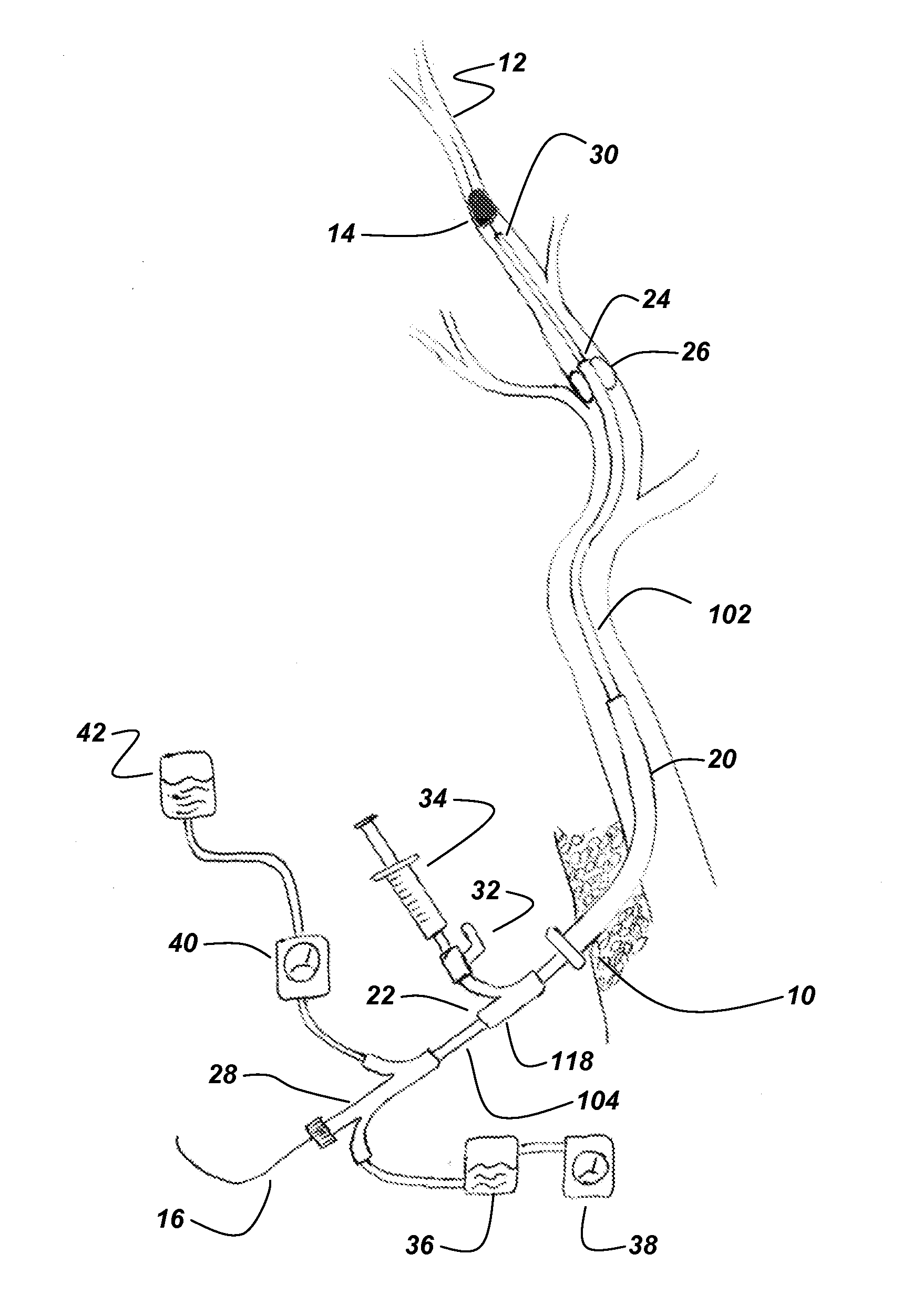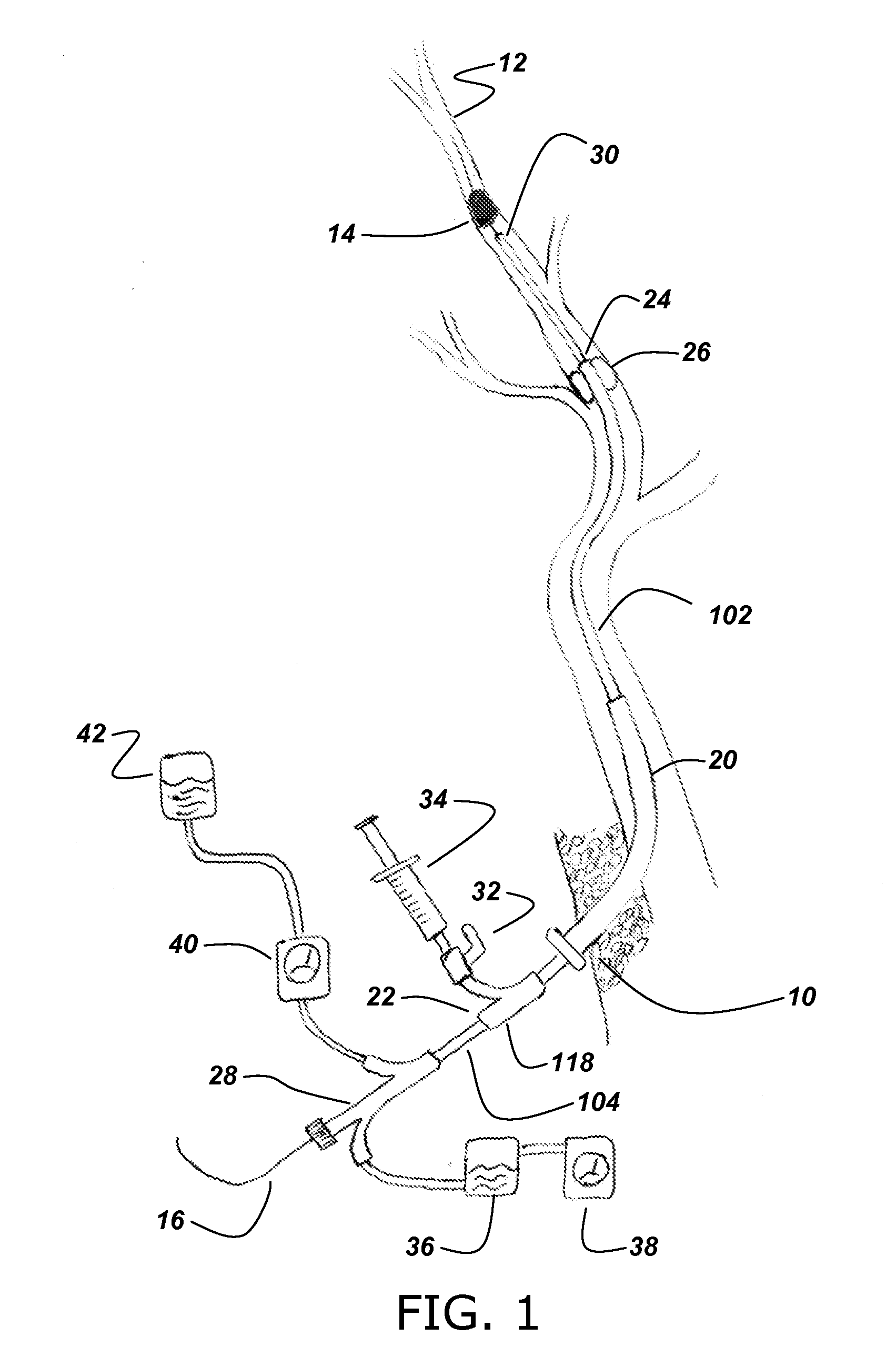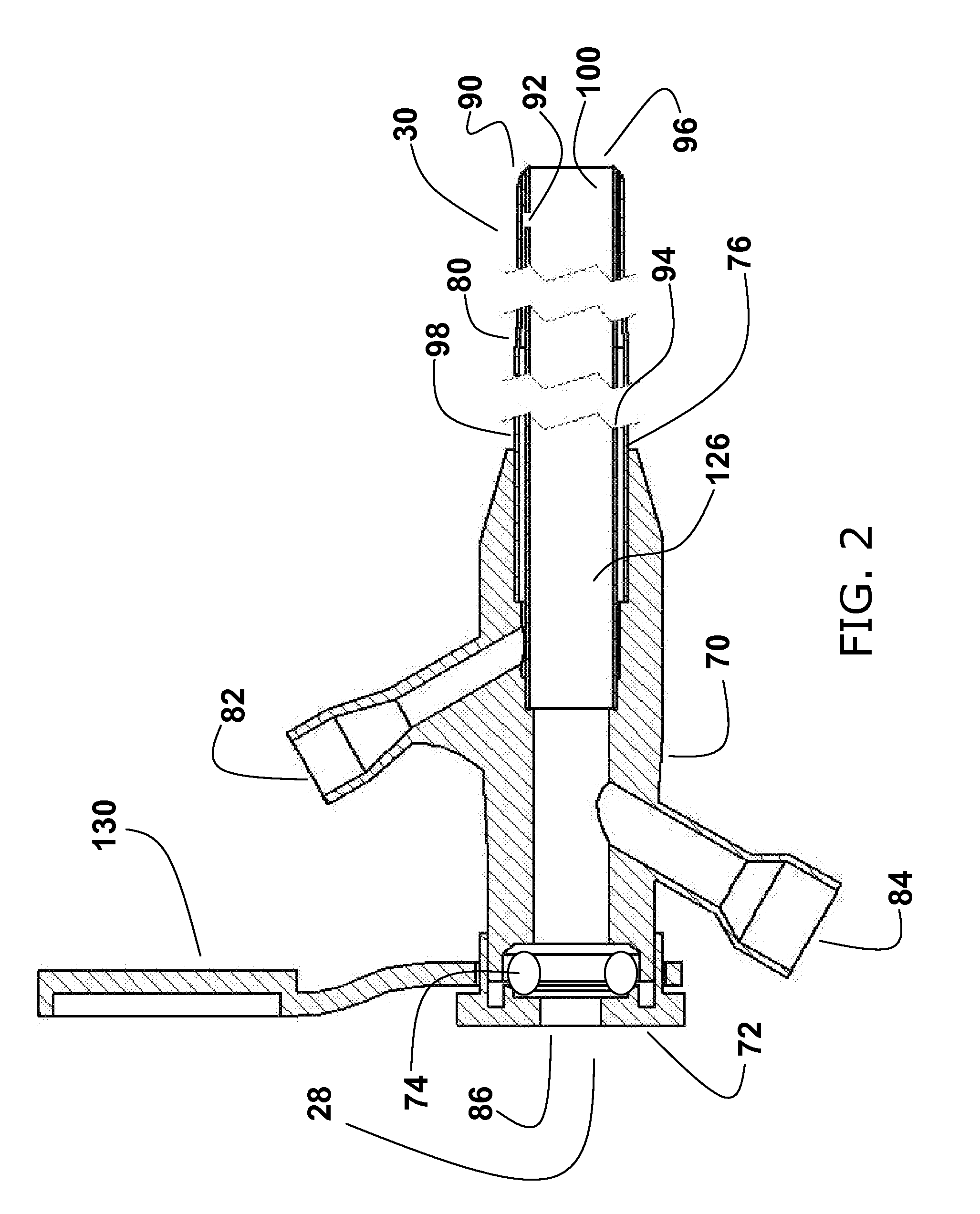Neurovascular microcatheter device, system and methods for use thereof
a micro-catheter and neurovascular technology, applied in the field of micro-catheters, can solve the problems of reducing life quality, tpas are not a viable treatment, and the cost of stroke patients is over $56 billion dollars per year
- Summary
- Abstract
- Description
- Claims
- Application Information
AI Technical Summary
Benefits of technology
Problems solved by technology
Method used
Image
Examples
Embodiment Construction
[0034]It is to be understood that both the foregoing general description and the following detailed description are exemplary and explanatory only and are not restrictive of the invention claimed. As used herein, the use of the singular includes the plural unless specifically stated otherwise. As used herein, “or” means “and / or” unless stated otherwise. Furthermore, use of the term “including” as well as other forms, such as “includes,” and “included,” is not limiting. The section headings used herein are for organizational purposes only and are not to be construed as limiting the subject matter described.
[0035]Unless specific definitions are provided, the nomenclatures utilized in connection with, and the laboratory procedures and techniques of neurology, vascular biology, neurosurgery and general medicine described herein are those known in the art. Standard symbols are used interchangeably with the full names represented by such symbols. Thus, for example, the terms “Fr” and “Fre...
PUM
 Login to View More
Login to View More Abstract
Description
Claims
Application Information
 Login to View More
Login to View More - R&D
- Intellectual Property
- Life Sciences
- Materials
- Tech Scout
- Unparalleled Data Quality
- Higher Quality Content
- 60% Fewer Hallucinations
Browse by: Latest US Patents, China's latest patents, Technical Efficacy Thesaurus, Application Domain, Technology Topic, Popular Technical Reports.
© 2025 PatSnap. All rights reserved.Legal|Privacy policy|Modern Slavery Act Transparency Statement|Sitemap|About US| Contact US: help@patsnap.com



